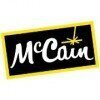
i
Life Style
Foods
Filter interviews by
Life Style Foods Interview Questions and Answers
Life Style Foods Interview Experiences
4 interviews found
I applied via Recruitment Consulltant and was interviewed in May 2022. There were 2 interview rounds.

(3 Questions)
- Q1. What is your keyskill ?
- Ans.
My key skill is effective production planning and scheduling to ensure optimal productivity and on-time delivery.
Expertise in creating production schedules and allocating resources efficiently
Strong ability to analyze production data and identify areas for improvement
Proven track record of meeting production targets and deadlines
Excellent communication and leadership skills to coordinate with cross-functional teams
Expe...
- Q2. How many manpower handling?
- Ans.
The number of manpower I handle as a Production Supervisor varies depending on the size and complexity of the production process.
The number of manpower I handle can range from a small team of 5-10 employees to a large team of 50 or more.
I am responsible for assigning tasks, monitoring progress, and ensuring that the production process runs smoothly.
I also handle manpower planning, which involves determining the optimal...
- Q3. What is your achievements?
Interview Preparation Tips
- Food Technology
- Q1. How to growth bussines
- Ans.
To grow a business, focus on customer satisfaction, market expansion, and innovative strategies to enhance sales and brand loyalty.
Enhance customer experience: Implement feedback systems to improve service quality, like Starbucks' customer surveys.
Expand market reach: Explore new demographics or regions, similar to how Netflix expanded globally.
Leverage digital marketing: Utilize social media and SEO to attract more cu...
- Q2. Why choose marketing
- Ans.
Marketing is essential for connecting products with consumers, driving sales, and building brand loyalty in a competitive landscape.
Understanding consumer needs: Marketing helps identify what customers want, like how Apple conducts market research to innovate products.
Building brand awareness: Effective marketing strategies, such as Coca-Cola's advertising campaigns, create strong brand recognition.
Driving sales: Promo...
- Q3. How are u increase business and team
- Ans.
To increase business and team performance, I focus on strategic planning, team motivation, and customer engagement.
Implement targeted marketing campaigns to reach new customer segments, such as social media ads tailored to specific demographics.
Conduct regular training sessions for the team to enhance their sales skills and product knowledge, leading to improved customer interactions.
Foster a collaborative team environ...
I appeared for an interview in May 2023, where I was asked the following questions.
- Q1. No questions asked by hr
- Q2. YESadfrisrtrrkdfokeeirjrdjjdbdbe
I applied via Walk-in and was interviewed in Feb 2021. There was 1 interview round.
Interview Questionnaire
3 Questions
- Q1. How many years experience about sortex machine
- Q2. Are you a maintenance fitter and welder
- Ans.
I am not a maintenance fitter and welder, but I have relevant skills in machinery operation and basic maintenance.
I have experience operating sorting machines and ensuring they run smoothly.
I can perform basic troubleshooting on equipment to identify issues.
I understand the importance of regular maintenance to prevent breakdowns.
While I am not a certified welder, I have basic welding knowledge from previous roles.
- Q3. Are you operate all plant machine
Interview Preparation Tips
Top trending discussions






Interview questions from similar companies

I applied via Campus Placement and was interviewed in Apr 2021. There were 3 interview rounds.
Interview Questionnaire
2 Questions
- Q1. They just asked about the current events which is happening in that moment and some basic technical questions
- Q2. Before you entering the interview room it's better to have a knowledge of current events, when I interviewed they asked MSP (minimum selling price) and farmers protest against the new APMC Act. And some te...
Interview Preparation Tips

Sales Executive Interview Questions & Answers
Harvest Gold Industriesposted on 14 Nov 2021
Interview Questionnaire
3 Questions
- Q1. Why do want to change company
- Ans.
I'm seeking new challenges and opportunities for growth that align with my career goals and aspirations.
Desire for professional growth: I'm looking for a role that offers more opportunities for advancement, such as leadership positions.
Alignment with company values: I want to work for a company whose mission and values resonate with my own, like sustainability or innovation.
Broader exposure: I'm eager to gain experienc...
- Q2. For growth and increment
- Q3. Is there any vacancy for Agra location

Sales Executive Interview Questions & Answers
Harvest Gold Industriesposted on 13 Jan 2023
I applied via Approached by Company and was interviewed before Jan 2022. There were 2 interview rounds.

(2 Questions)
- Q1. How much do you know about Sales?
- Q2. How to increase sales
Interview Preparation Tips
- Sales
- Marketing

Sales Executive Interview Questions & Answers
Harvest Gold Industriesposted on 26 May 2025
I appeared for an interview before May 2024, where I was asked the following questions.
- Q1. Working style at behaviour with distributor & retailer
- Ans.
My working style emphasizes collaboration, transparency, and relationship-building with distributors and retailers for mutual success.
Build strong relationships: Regular check-ins with distributors to understand their needs and challenges.
Provide training: Organize workshops for retailers to educate them about product features and benefits, enhancing their selling skills.
Transparent communication: Share sales forecasts...
- Q2. Value holding in market
- Ans.
Value holding in the market refers to the perceived worth of a product or service based on demand, competition, and consumer preferences.
Market demand influences value; for example, luxury brands like Rolex maintain high value due to exclusivity.
Competition affects pricing; if many companies offer similar products, prices may drop, reducing perceived value.
Consumer preferences shift over time; for instance, eco-friendl...
- Q3. Sallary negotiation with hr structure are shared by them
Interview Preparation Tips

I applied via Referral and was interviewed in Aug 2024. There was 1 interview round.
Market sale distribution

I applied via Naukri.com and was interviewed in Dec 2023. There were 2 interview rounds.
(1 Question)
- Q1. Regarding old company working
(2 Questions)
- Q1. All the technal questions regarding regulatory
- Q2. Technical questions regarding food.
Interview Preparation Tips
Life Style Foods Interview FAQs
Tell us how to improve this page.
Interview Questions for Popular Designations
- Analyst Interview Questions
- Team Lead Interview Questions
- Software Engineer Interview Questions
- Senior Engineer Interview Questions
- Sales Executive Interview Questions
- Associate Software Engineer Interview Questions
- Java Developer Interview Questions
- Senior Software Engineer Interview Questions
- Show more
Overall Interview Experience Rating
based on 6 interview experiences
Difficulty level
Duration
Interview Questions from Similar Companies
Life Style Foods Reviews and Ratings
based on 92 reviews
Rating in categories
|
Sales Officer
22
salaries
| ₹2.4 L/yr - ₹5 L/yr |
|
Area Sales Manager
12
salaries
| ₹6 L/yr - ₹10 L/yr |
|
Quality Executive
9
salaries
| ₹2 L/yr - ₹4.2 L/yr |
|
Key Account Manager
8
salaries
| ₹5.5 L/yr - ₹11.4 L/yr |
|
Sales Coordinator
7
salaries
| ₹2.9 L/yr - ₹4.4 L/yr |

Ferrero

Anmol Industries

Cpf India

McCain Foods
- Home >
- Interviews >
- Life Style Foods Interview Questions










